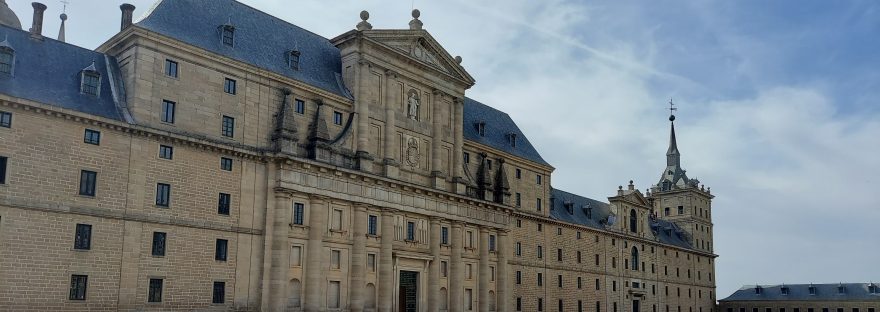Just as grandiose and majestic as its name suggests, so is the Royal Monastery of “San Lorenzo de El Escorial”, when you look at it up close. In 1931 it was declared a Historic-Artistic Monument and in 1984 it was recognized by UNESCO as a World Heritage Site.
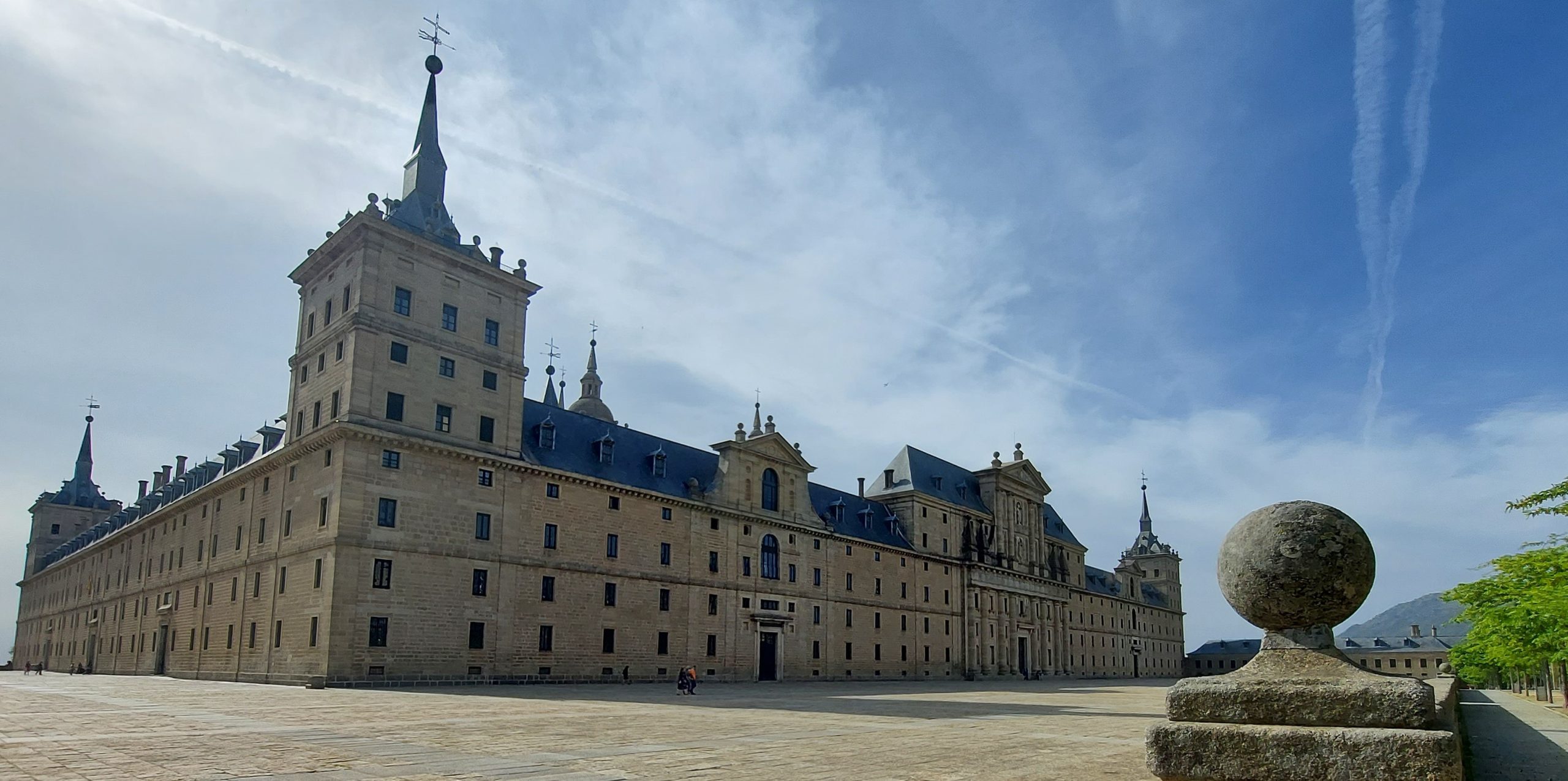
As its name implies, it is located in the Spanish town of “San Lorenzo de El Escorial”, in the Community of Madrid. The Royal Monastery is formed by an immense rectangle within which are distributed: the sacred space of the Temple and its atrium, the Convent, which is distributed around a large and four small courtyards, the King’s House, the rooms of the King’s Palace, the College, the Library and the Pantheon.
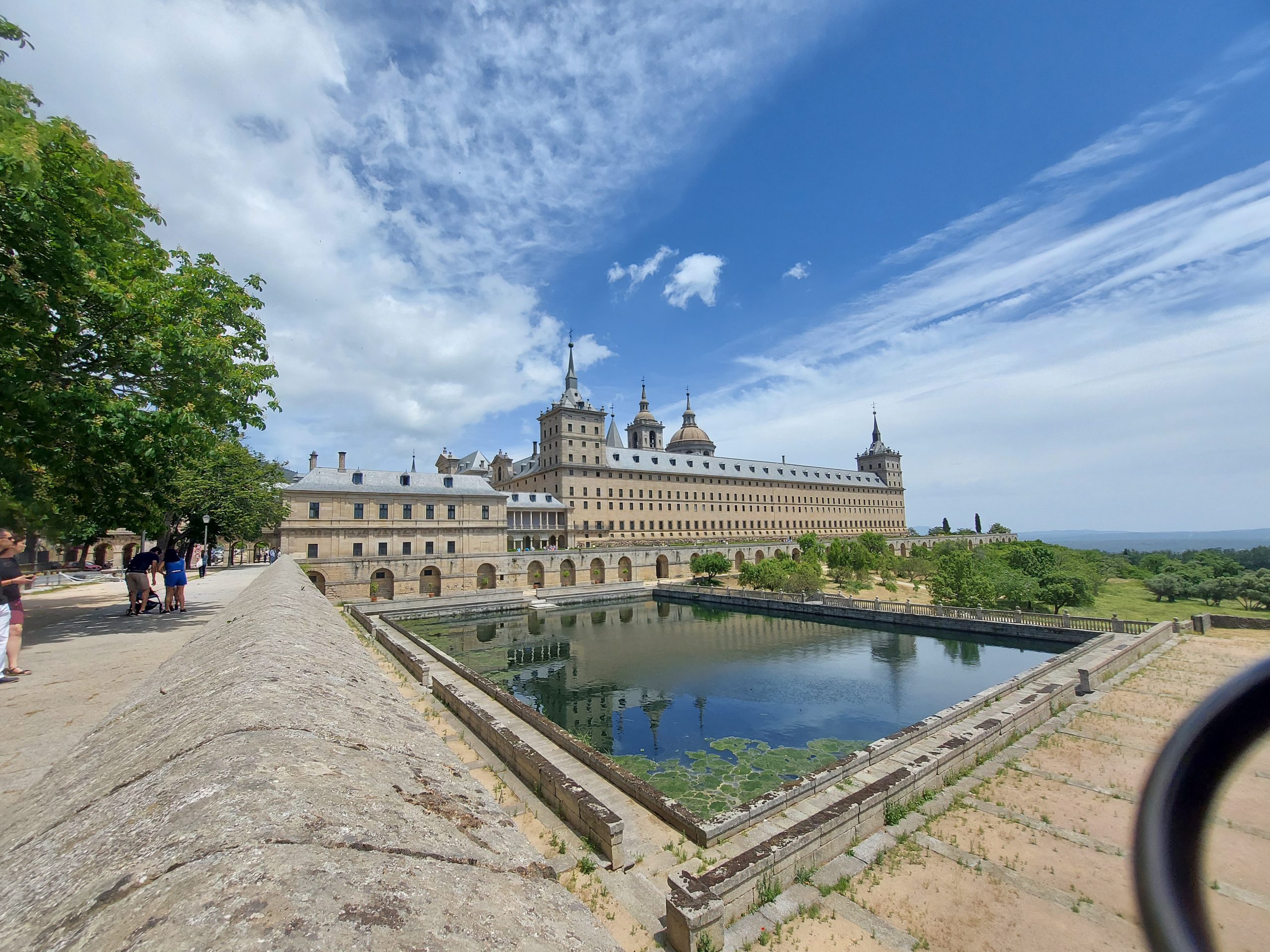
It was built in the sixteenth century between 1563 and 1584 by order of King Philip II, in recognition of the victory of “San Quintín”, which took place on the day of “San Lorenzo” in 1557 and the desire to build a mausoleum in memory of his parents and himself, placed under the patronage of “San Lorenzo”. The palace was the residence of the Spanish royal family and is the burial place of the kings of Spain. The monastery originally founded by monks of the Order of St. Jerome, is now occupied by friars of the Order of St. Augustine.
The Royal Monastery of “San Lorenzo de El Escorial” is one of the most unique Renaissance architecture in Spain and Europe. The work was started by the architect Juan Bautista de Toledo in 1563, designing a universal layout based on the traditional medieval monasteries. The measurements of the rectangle of the plan, according to information from 1605, are 735 x 580 feet, or 205 x 162 meters. The total height at the highest point of the cross taken with respect to the pavement of the church is 95 meters. In 1567, his disciple Juan de Herrera continued the work after the death of Juan Bautista de Toledo. Herrera completed the construction of the monastery in 1584. It was precisely this architect who reformed the previous project and created his own style, called Herrerian, characterized by little decoration and strictly geometric lines.
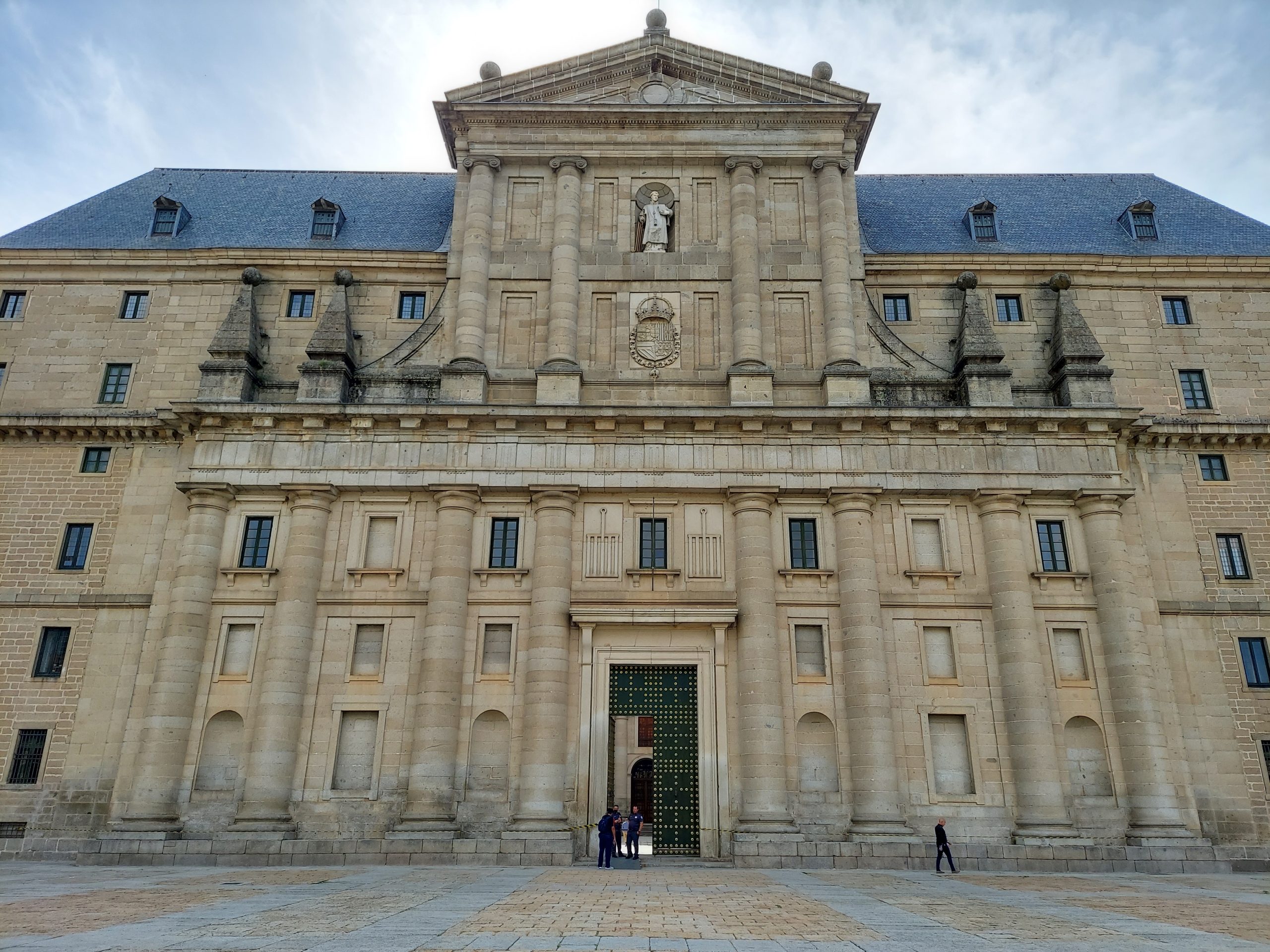
The main façade of the Royal Monastery of “San Lorenzo de El Escorial” is oriented to the west and in its center, eight columns form part of the main façade, built by Juan de Herrera, supporting a Doric entablature. Above, four Ionic columns support a triangular pediment. In the center of these columns we can see the royal coat of arms of Philip II and, above it, a monumental statue of San Lorenzo, in granite and white marble, both made by the Toledo artist Juan Bautista Monegro. The rest of the façade lacks decoration, as it is occupied by windows.
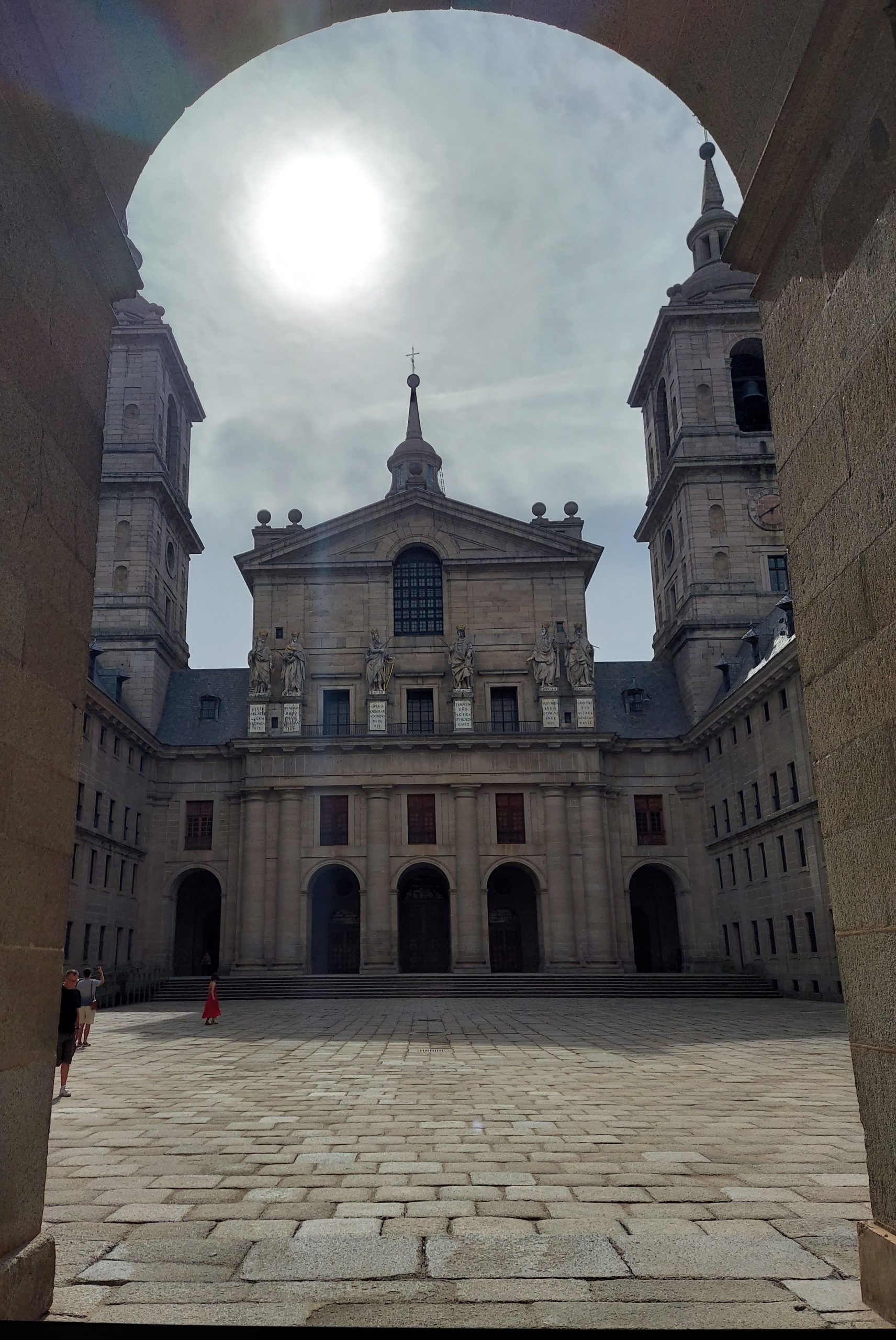
Unfortunately, inside the Royal Monastery of San Lorenzo de El Escorial the taking of pictures is not allowed, except for the Patio de los Reyes*. *This is the real core of the whole complex, around which the other rooms are articulated. The Courtyard of the Kings was conceived as an antechamber to the Basilica of the Monastery and as a place of union between divine and human wisdom.
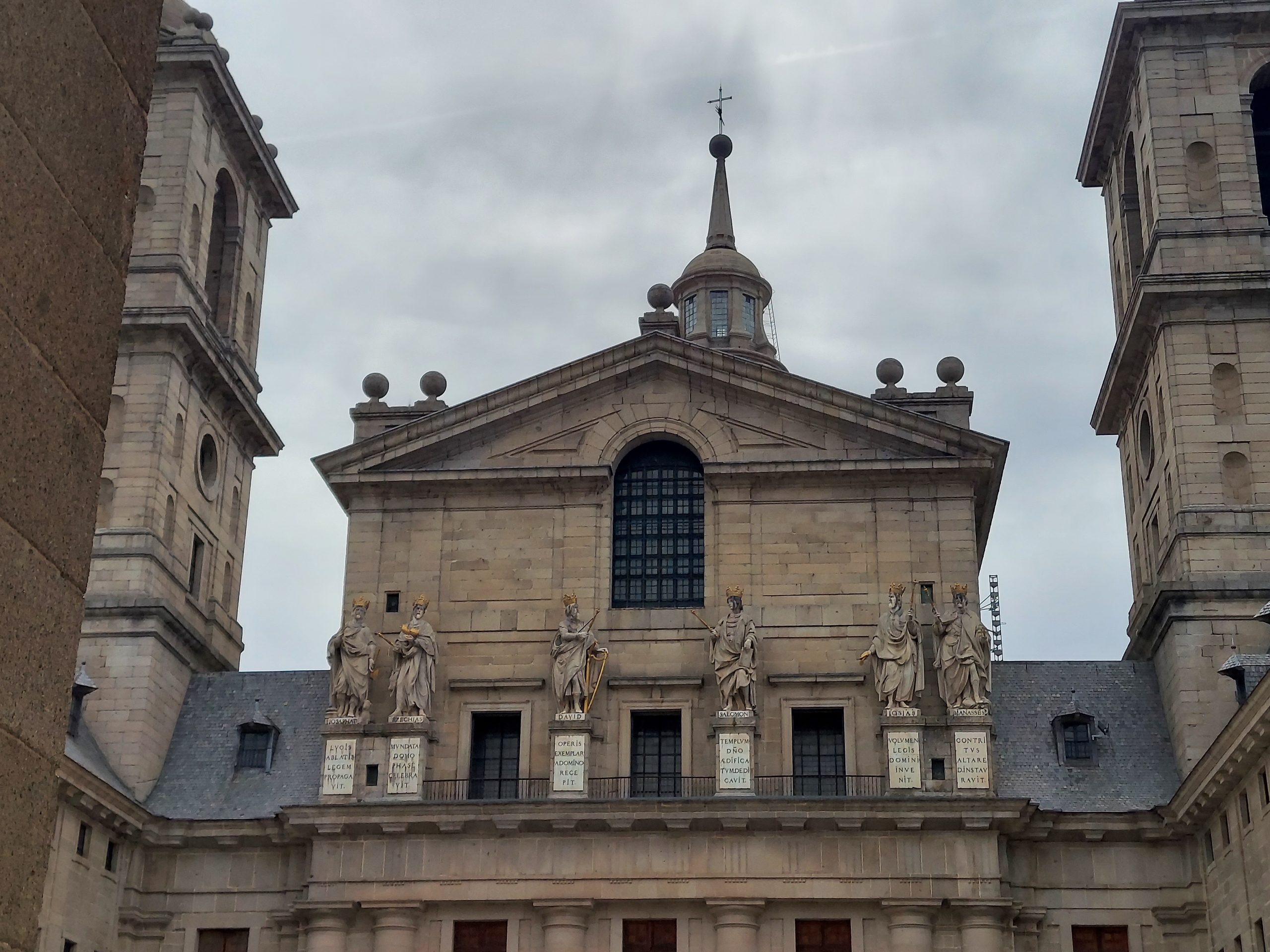
It is so named because of the presence of six kings of Israel on the façade of the church: Solomon, David, Josiah, Manasseh, Jehoshaphat and Hezekiah. These figures were made by Juan Bautista Monegro, between 1580 and 1583. They measure 5 meters and stand on pedestals with inscriptions, which were installed later in 1660. They are made of granite, with details in white marble, while the crowns and figures they carry are made of gilded bronze. Framing these figures are two bell towers, two of the highest points of the monastery.
In the artificial terraces surrounding the south and east facades of the Royal Monastery are the Garden of the Friars and the King’s and Queen’s Gardens. These are truly a beauty.
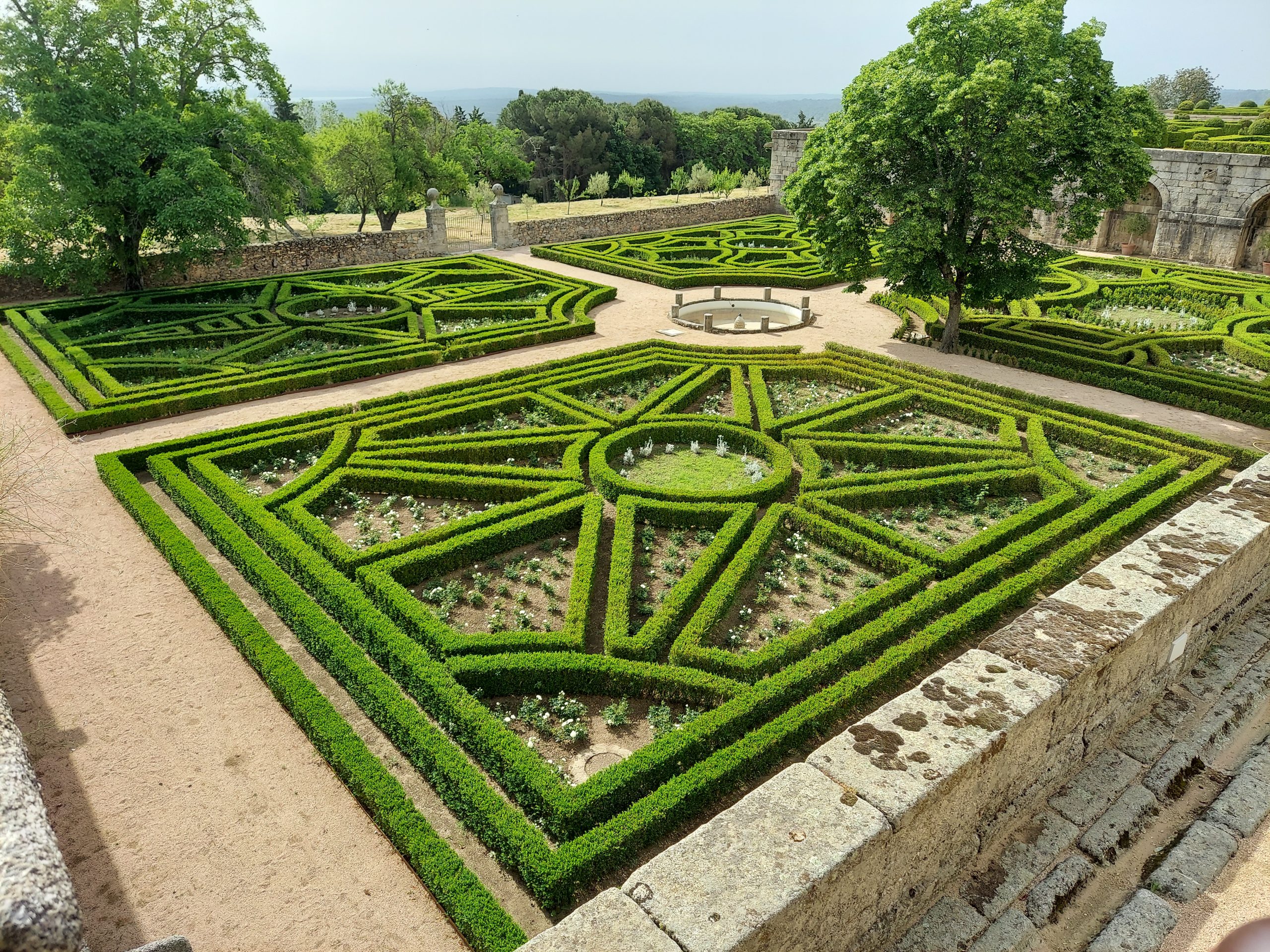
King Philip II was a nature lover and thought of his gardens as a productive space in which to grow vegetables and medicinal plants, but also as a means of pleasure and relaxation, with fountains and flowers. The monarch compiled plans of gardens found in France, Italy, England and the Netherlands, hiring the best gardeners, both foreign and Spanish. Today we actually observe an austere garden, compared to the flower-filled garden that originally existed. It is said that these gardens formed a kind of tapestry or carpets similar to those brought from Turkey or Damascus. In addition, there was a botanical garden, with up to 68 different varieties of flowers, many medicinal, and some 400 plants that were brought from the Americas.
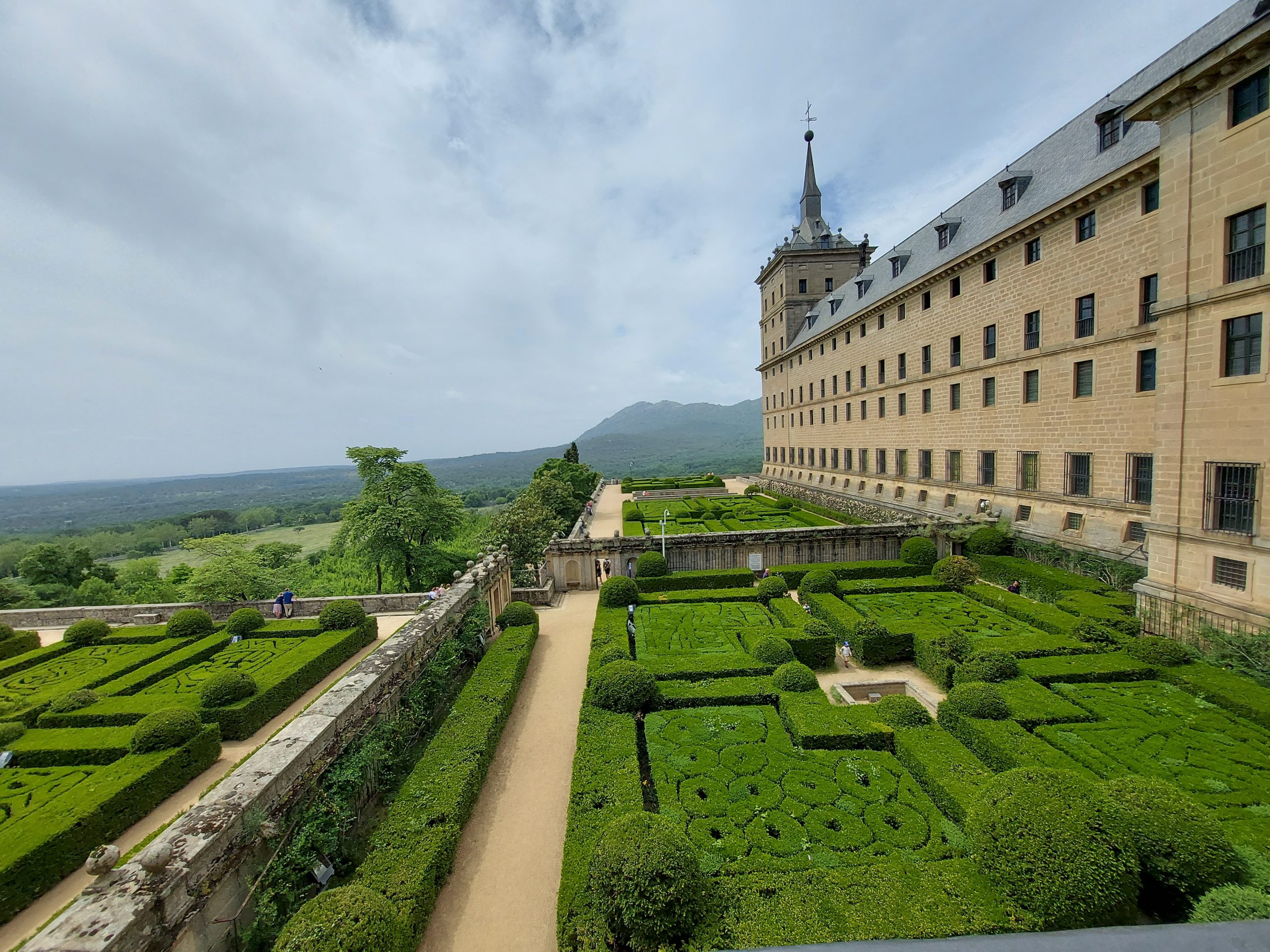
Resources:
https://www.sanlorenzoturismo.es/visitar/monasterio-de-san-lorenzo-de-el-escorial/
https://es.wikipedia.org/wiki/Real_Monasterio_de_San_Lorenzo_de_El_Escorial
http://historiadeespa=C3=B1a.net/el-patio-de-los-reyes-del-monasterio-de-el-escorial/

